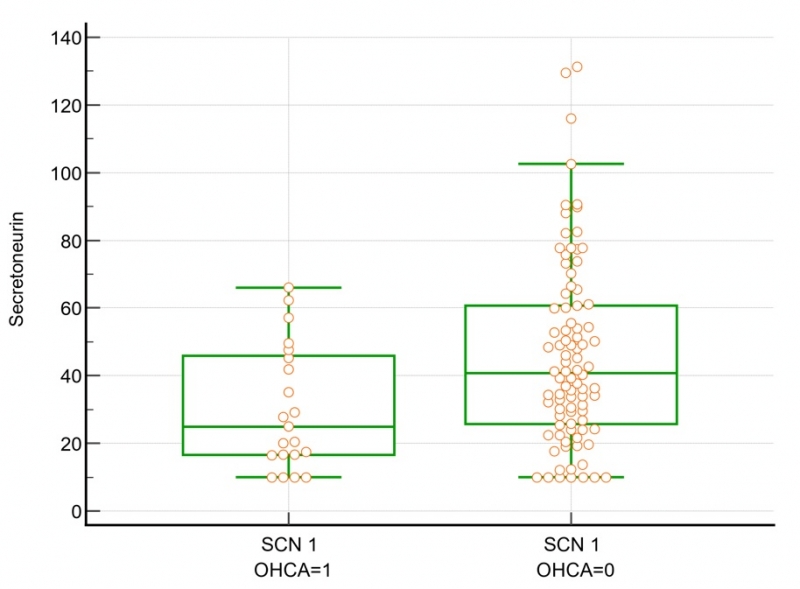SECRETONEURIN AND ITS ABILITY TO IDENTIFY PATIENTS AFTER OHCA VERSUS PATIENTS WITHOUT A HISTORY OF VENTRICULARARRHYTHMIA
Introduction:
The incidence of OHCA (Out of Hospital Cardiac Arrest) has strong local variability. The reported global averageis 55 adult patients per 100,000 population with an overall very unfavorable prognosis. The most common causeis ACS (acute coronary syndrome). Early diagnosis and treatment of ACS in patients after OHCA is the only wayto improve their prognosis. However, there is no laboratory or other parameter that can detect these patientsbefore the development of OHCA.
Methods:
We prospectively evaluated the collected levels of secretoneurin (SN) in patients after OHCA who had animplanted cardioverter - defi brillator (ICD) for secondary prevention with a group of patients with ICDimplantation for primary prevention of sudden cardiac death. We took these values a total of 3 times for bothgroups of patients at 0, 3 and 6 months. SN was analyzed from venous blood by ELISA. Values are expressed asmean, variables are compared using standard statistical methods.
Results:
In our group of patients (N = 111), we compared SN levels in OHCA survivors (N = 21; 18.9%) with patients withouta history of OHCA (N = 90; 81.1%). Males and females differed in anthropometric and other clinical parameters.Signifi cantly higher maximum SN values (66 vs. 131.3 pmol/l) and median 24.9 vs. 40.75 pmol/l in all 3consecutive samplings with a suffi cient time interval (P = 0.0098).
Conclusion:
Secretoneurin values are signifi cantly higher in patients with an implanted ICD for secondary prevention than inpatients with primary preventive ICD implantation, even long after the event, when they continue to be elevated.
